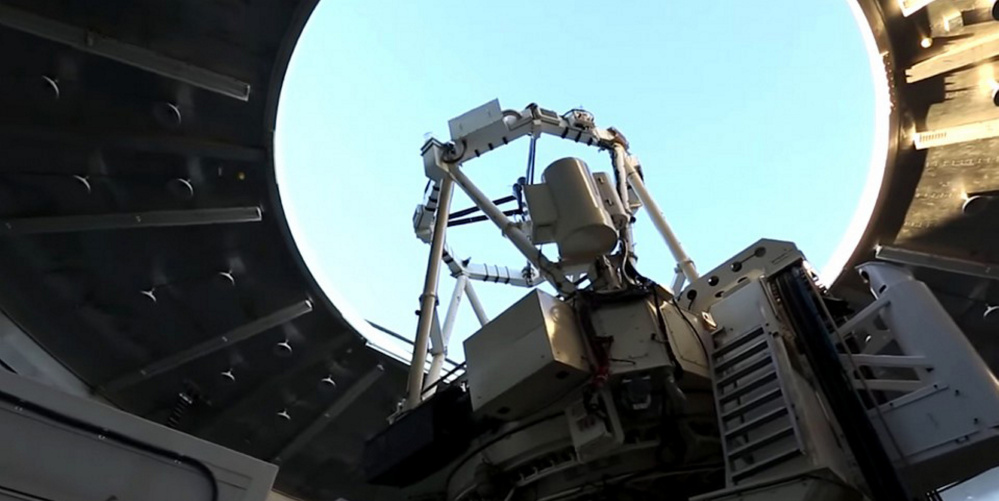There are a lot of rocks flying through space. Lots of debris, too. Old satellites, spent rocket boosters, even for a short while a spatula that got loose during a space shuttle mission in 2006. All of it swirling around in orbit, creating a bit of a traffic jam.
The Pentagon has long been worried about the collisions that might be caused by an estimated 500,000 pieces of debris, taking out valuable satellites and, in turn, creating even more debris. On Tuesday, the Defense Department took another step toward monitoring all of the cosmic junk by delivering a huge new telescope capable of seeing small objects from far away.
Developed by the Defense Advanced Research Project Agency, the Space Surveillance Telescope was transferred to the Air Force at White Sands Missile Base in New Mexico Tuesday.
The telescope is designed to monitor objects as small as softballs, in Geosynchonous orbit – some of the most important real estate in space. At 22,000 miles away, its orbit mirrors that of the Earth, so that satellites parked there remain in a fixed point over the globe.
Over the next two years, the telescope is going to be moved and reconstructed in to Australia, a vantage point that would allow it to survey an underserved area of space.
Send questions/comments to the editors.



Success. Please wait for the page to reload. If the page does not reload within 5 seconds, please refresh the page.
Enter your email and password to access comments.
Hi, to comment on stories you must . This profile is in addition to your subscription and website login.
Already have a commenting profile? .
Invalid username/password.
Please check your email to confirm and complete your registration.
Only subscribers are eligible to post comments. Please subscribe or login first for digital access. Here’s why.
Use the form below to reset your password. When you've submitted your account email, we will send an email with a reset code.